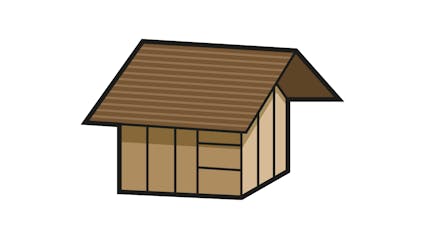222 – Pig sty from Brugg Argovia, 19th century
Until the 1950’s they kept hogs in this little frame building, feeding them with their kitchen garbage.

Urban smallholders
Gardens, fruit trees and bleating goats in the middle of the city? For centuries this was quite normal and remained widespread partly into the 1950’s and 1960’s. Many a worker practised a little agriculture on the side – how could he otherwise nourish his family? He didn’t have enough money to cover his needs at the weekly market, nor did the market carry all the goods he needed. Thanks to his smallholding, he enjoyed daily fresh milk and, in winter, stores of vegetables and fruit preserves. In the autumn he could slaughter an animal and smoke the meat in his chimney. The children treasured sausages.

Pig sty and toilet
The pig sty from Brugg, a city of more than 10,000 inhabitants, must be seen in this relation. Jakob Schicker was a cabinetmaker but also kept a smallholding with his wife Margaretha in the Altenburg quarter where they even had two rows of fruit trees. Until the 1950’s they kept hogs in this little frame building, feeding them with their kitchen garbage. A simple outhouse is built into the sty, a combination once common.
Out of sight …
Toss things in the garbage bag, flush the toilet with a push of the finger – modern people get rid of unpleasant things as quickly as they can. This principle of disposal is also found in the multipurpose buildings of former times. While they united the necessary functions for man and beast in a practical manner under one roof, two functions were preferably kept separate: the toilet and the sty.
Ballenberg
Swiss Open-Air Museum
Museumsstrasse 100
CH-3858 Hofstetten bei Brienz
Company holidays
24 December 2025 to 11 January 2026
Opening hours Administration
3 November 2025 to 8 April 2026
From Monday to Friday
8.30 am to 11.30 am
1.30 pm to 4.30 pm
Opening hours
9 April to 1 November 2026
10 am to 5 pm daily